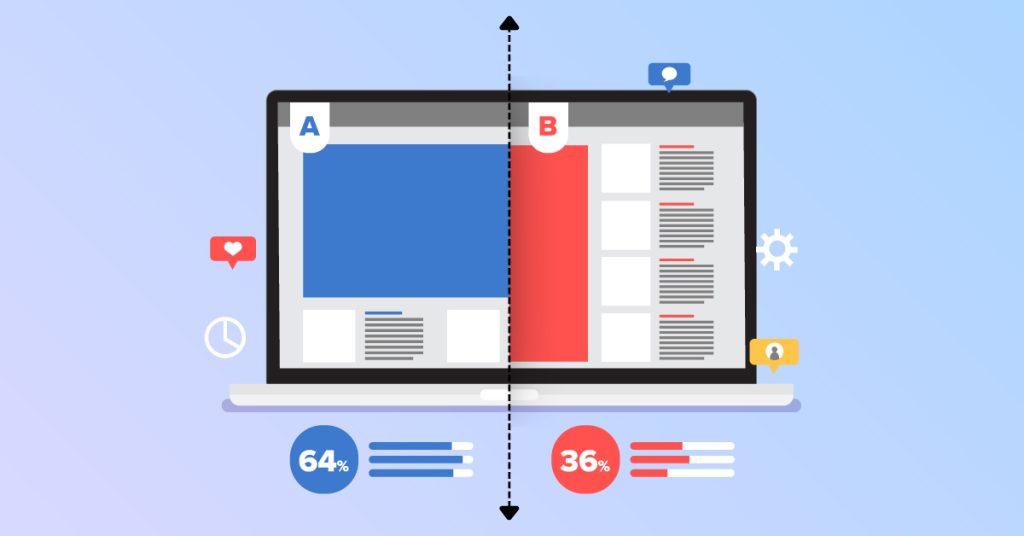Healthcare marketing isn’t just about getting traffic
It’s about what happens next. You’ve invested in Google Ads, Meta campaigns, YouTube videos, and SEO—but if visitors land on your site and leave without taking action, you’re leaving money—and patients—on the table.
That’s where Conversion Rate Optimization (CRO) comes in. At MedMarkUp, we help healthcare providers convert more of their existing traffic into leads, bookings, and loyal patients by transforming their websites and digital funnels into conversion machines.
The Unique Challenges of CRO in Healthcare
Healthcare consumers are different from retail or tech audiences. They’re often:
Under emotional stress
Looking for reassurance, safety, and credibility
Concerned about privacy and data security
Unfamiliar with medical terminology
This means your digital experience must be:
- Emotionally intelligent
- Easy to navigate
- Clear about procedures, pricing, and next steps
- List Item
- Trustworthy and compliant
What is CRO and Why Does It Matter in Healthcare?

Conversion Rate Optimization ( CRO )
is the science (and art) of turning passive website visitors into active patients. In healthcare, this means making your digital experience so intuitive, reassuring, and action-driven that it leads people to schedule an appointment, request information, or sign up for a service.
In a competitive and often overwhelming healthcare environment, patients are looking for ease, clarity, and confidence in the provider they choose. CRO ensures your digital experience delivers just that.
Metrics That Matter in CRO
We don’t optimize for traffic—we optimize for:
Conversion Rate (visitors-to-leads)
Cost Per Acquisition (CPA)
Lead Quality (ready-to-book patients)
Time-on-site and bounce rates
Form completion rate
Every improvement is tied to performance. If it doesn’t help your clinic grow, it’s not a win.

Our
CRO Process for Medical Websites
at MedMarkUp
We begin with a full audit of your website and landing pages
This includes:
Heatmaps and user behavior tracking
Funnel analysis (where visitors drop off and why)
UX/UI review for clarity and simplicity
Device-specific analysis (mobile-first focus)
We don’t guess—we test
Using both quantitative and qualitative data, we identify:
Barriers to conversion
Friction points in the booking journey
Opportunities to build trust and reduce anxiety
We redesign your pages with conversion in mind:
Clear call-to-actions (CTAs)
Optimized above-the-fold messaging
Easy forms, mobile booking flows, sticky buttons
Trust-building visuals (doctors, reviews, certifications)
We run controlled experiments to validate improvements:
Headline testing
CTA button color/text
Image placement
Copy tone and structure
Once we find what works, we scale it:
Across other service lines
Across multiple locations
Across ad landing pages, blog posts, and lead magnets
CRO Optimization Areas We Focus On
Website Design & Layout
Conversion-driven layouts
Scroll behavior optimization
Sticky navbars and buttons
Hero sections that convert
Page Speed & Mobile Experience
Google Core Web Vitals compliance
Speed optimization
Fully mobile-responsive design
Form Optimization
Fewer fields = more conversions
Mobile-friendly, autofill-enabled forms
Progress indicators and instant validation
Booking Experience
Integrated calendar tools
One-click call buttons for mobile
Multi-language support
Trust Builders
Real doctor photos and bios
Verified reviews and testimonials
Security badges and GDPR/HIPAA compliance signals
Messaging and Content
Benefits-first headlines
Simplified language
Emotional triggers (ease, relief, support)
Video and visual storytelling (patient journey explainer videos)
Why CRO is a must
Did you know?
96%
Up to 96% of website visitors don’t convert on their first visit — making CRO critical to capitalize on existing traffic.
(Source: Neil Patel)
10%
Improving your conversion rate by just 1% can increase revenue by over 10%, depending on your average patient value.
(Source: HubSpot)
2.5X
Mobile users in healthcare convert 2.5x lower than desktop unless mobile-specific CRO tactics are implemented.
(Source: Think with Google)
FAQ
FAQs about paid search management
Looking to learn more about paid search management for your business? Browse our FAQs:
Typical medical websites convert between 2%–4%. With CRO, it’s common to reach 5%–10% or more, depending on the service and local competition.
You may start to see improvements within a few weeks, but real impact typically happens over 60–90 days as testing and iterations compound.
No. Most CRO strategies are applied to your existing site or landing pages. We enhance what’s already there to make it perform better.
Yes. By increasing your conversion rate, you reduce your cost per acquisition (CPA), which means your ad spend becomes more efficient.
Not at all. We also optimize landing pages for ads, mobile flows, lead forms, and email journeys to maximize every digital interaction.
We use metrics like form completion rates, appointment bookings, cost per lead, bounce rate, and time on site—always tied to real growth goals medical clients need.



